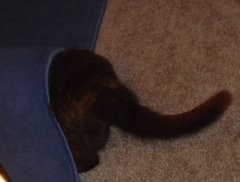There are so many excellent tellings and illustrations of this classic folktale from all over the world-- I had a hard time selecting just one. I also am inspired to hunt up more of the titles I uncovered, and begin to compare the narratives and values encouraged in different places and at different times.
BIBLIOGRAPHY
Hughes, Shirley. ELLA’S BIG CHANCE: A JAZZ-AGE CINDERELLA. New York: Simon & Schuster Books for Young Readers, 2003. ISBN: 0689873999.
PLOT SUMMARY
In this personable and unexpected retelling of the classic Cinderella story, little Ella is an accomplished dressmaker in her father’s little shop. With Buttons the delivery boy, and an old gray cat to keep things merry, all is well until her father suddenly remarries. His new wife drum up more business than Ella and her father can handle, and Ella is not allowed to benefit from the flowing profits. Only Buttons stands by her. When she is not allowed to attend the grand ball, Buttons cheers her up before her godmother even arrives, but off to the ball she goes. It is Ella’s realization, when faced with the opportunity to marry the duke and live a life of ease, of what brings true happiness that sets this telling of the old classic apart. That, and the illustrations which bring each character’s personality to life.
CRITICAL ANALYSIS
Ella’s unexpected understanding that a choice exists, even though the rich and hansom man wants her hand in marriage, is an unusual adaptation to this classic tale. Other delightful adaptations include Ella’s untraditional beauty—her hair is red—and her tendency to clearly state what she thinks. At one point, Ella cries “I think you’re mean!”
The characters are fresh and dynamic, and the illustrations bring added depth and rounding out their development. The realism of the story’s unfolding is also unusual. For example, the duke recovers from Ella’s rejection by flying to South America in his private plane, and Ella and Buttons don’t expect to grow rich or stop working now that they have found true love. The story has a closed ending, even including the fate of the cat,
Author/illustrator Shirley Hughes has formatted her book so that each page contains a box of script, and a smaller black and white illustration. The bulk of each page is devoted to evocative color illustrations that clearly portray the relationships between characters, and the emotional impact of each event in the story. Smaller and incomplete, the black and white illustrations in the story box are a bonus, and usually show the emotions and involvement of lesser characters—the cat, Ella’s father, Buttons when the duke first comes to visit—often in comical or revealing poses.
ELLA’S BIG CHANCE is an excellent opportunity to discuss emotions, relationships, and reality. A good read, it will not bore even older audiences, but may contain too much text for the beginning reader or listener.
REVIEW EXCERPTS
Booklist: “…This self-empowered Cinderella makes for an interesting change of pace.”
Publishers Weekly: “The length of this jaunty, if sometimes clichéed, retelling, as well as some of the vocabulary ("languid," "divan") and British colloquialisms may prove daunting to a younger audience. However, Hughes's fluid lines and bright colors contribute to illustrations with such graceful movement that they might have been inspired by Fred Astaire and Ginger Roger's movies, as well as by 1920s French couture.”
Starred Review School Library Journal: “This insightful retelling also offers a fascinating visual peek at a glamorous time.”
CONNECTIONS
==> Discuss the emotions evident to new readers just from the illustrations. How does the old gray cat feel about being turned into a smart chauffeur for the night? Why is Buttons lurking in the corner when the Duke comes to call? Where did each of the characters make a choice, and what came of it?
==> Compare the illustrator’s style in this retelling to that in Hilary Knight’s 1978 version, and the illustrations in THE GIFT OF THE CROCODILE by Judy Sierra. How does each set of illustrations benefit the story being told?
If the term "LS 5603-20" means anything to you, you're in the right place.
Tuesday, June 19, 2007
Subscribe to:
Post Comments (Atom)


No comments:
Post a Comment